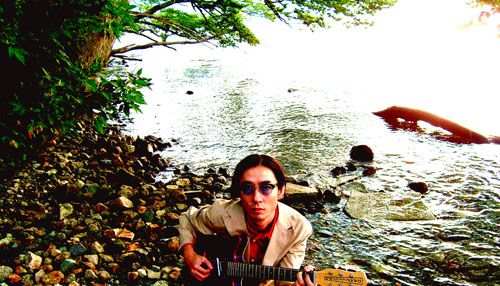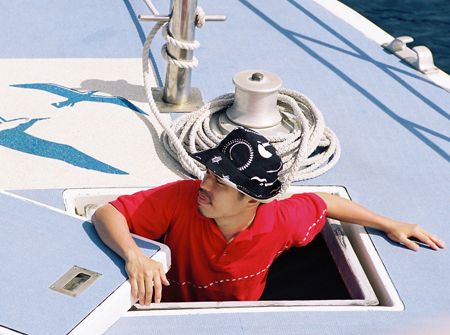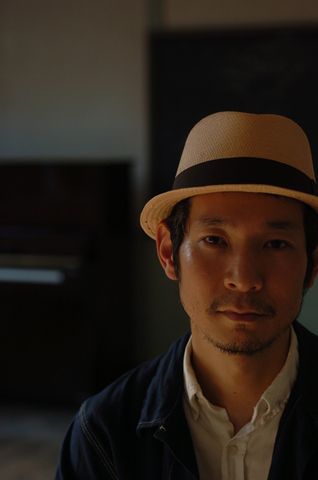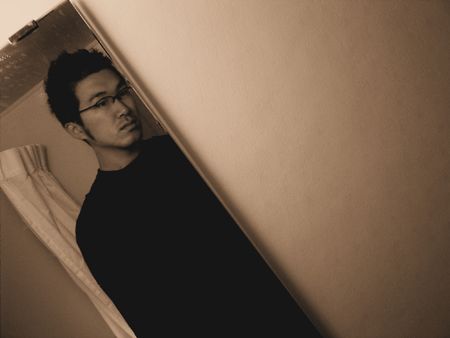Concert
Worldtronics: Japan
Kama Aina - Takeo Toyama - Nobukazu Takemura - Miho Folio

From the continual sound design of daily life to the omnipresent gigantic LED lettering in the metropolises, present-day Japan is a totally electronicised urban space. Its electronic music is equally varied, despite the fact that it is largely unknown here – apart from a few big names like Ryuichi Sakamoto, formerly with the Yellow Magic Orchestra, and extreme noise artists like The Boredoms. Japanese musicians were pioneers of electronic music. As early as the 1940s, composers such as Toshiro Mayuzumi were analysing the sound spectrum of Buddhist temple bells using electronic measuring instruments. WORLDTRONICS presents musicians who are again turning to traditional instruments and the song structures of pop and folk. For these musicians, electronic instruments and software have ceased to have any aesthetic content: they are mere tools. The high-calibre line-up shows how well the traditional qualities of Japanese music such as abstraction and reduction, a playful lightness, and meditative structures complement its openness to Western and non-European rhythms, jazz and classical music.
8 p.m.
Kama Aina
A Japanese man speaks Hawaiian, his great love is ‘island music’: ‘Kama Aina’ means ‘islander’ and is the solo project of multi-instrumentalist and art activist Takuji Aoyagi, who is probably one of the most colourful protagonists on the Japanese folk pop scene. This inquisitive globetrotter collects sounds like others collect shells. On his fifth album, Club Kama Aina, for example, he demonstrates again and again that he is just as much at home in Cuban and Hawaiian music as he is in Tokyo.
9 p.m.
Takeo Toyama
TrioDigital compositions for analogue instruments. This is the path Takeo Toyama has chosen to take along the interface between minimal music, new music, field-recording and pop. His music shows how repetitive structures can sometimes offer considerable freedom. On his debut album, Ground Piano, he played almost all of the instruments himself. At the House of World Cultures, he joins forces with acco (flute), Yuichi Inobori (trombone) and Miki Hayashi (marimba, organ and vocals). His fondness for Krautrock, jazz and classical music is reflected in disharmonic chords and surprising rhythm changes. Sweet melody progressions metamorphose into melancholic thunder storms.
Takeo Toyama at Underground Budapest...
10 p.m.
Nobukazu Takemura
Playful melodies with electronic interference and background noises are his trademark. Nobukazu Takemura is one of Japan’s most successful musicians and DJs. He started off on the turntables in clubs in Osaka, Kyoto and Kobe before founding Audio Sports in 1990, the now legendary hip-hop formation with Eye Yamatsuka (The Boredoms), and later his Childisc label. Since 1993, he has been touring successfully mostly as a solo artist under the pseudonym Child's View. Takemura’s stylistic spectrum ranges from jazz to house music to drum and bass, chamber music and glitch. He likes to play the ‘no-input-mixing-board’, his very own creation. He has co-operated with people such as fashion designer Issey Miyake, Steve Reich, Yo La Tengo, Tortoise and Mouse on Mars on a variety of projects. And with his sound design for Aibo, the Sony robot dog, he is present in every child’s room in Japan.
Nobukazu Takemura at YouTube...
11.30 p.m.
Miho Folio
Although it has only just been released, his debut album Bragile is already an insider tip. Toshihiro Horio’s solo project Miho Folio was inspired by western influences ranging from jazz and pop to Brazilian music. Using a sophisticated clicks-and cuts technique, he has blended these influences with hip-hop phrases and complex harmonies to create ambient-scapes. With their feel-good melodies and pleasant surprises, his laptop concerts exude the quintessence of pop.


